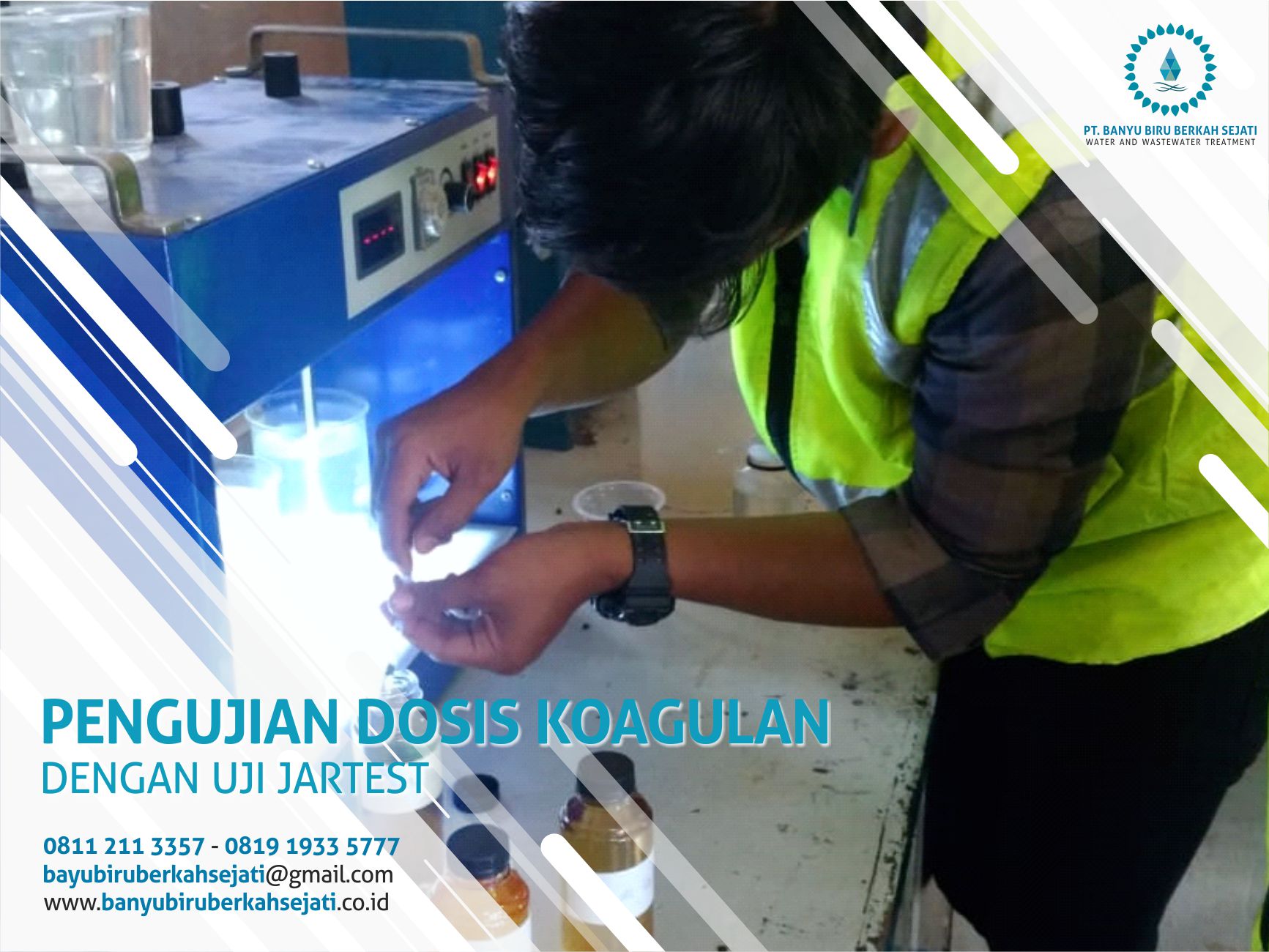Coagulant
Coagulant is a chemical needed to assist the process of settling small particles that cannot settle by themselves (graphically). Turbidity and color can be removed through the addition of coagulants or similar chemicals, among others.
Types of coagulants:
- Aluminium Sulfate (Al2(SO4)3.14H2O)
Usually called alum, this material is often used because it is effective for reducing carbonate levels. Alum is in the form of crystals or white powder, soluble in water, insoluble in alcohol, non-flammable, economical, easy to obtain and easy to store. The use of alum has the advantage that the price is relatively cheap and is well known by water treatment operators. But there are also disadvantages, which are generally supplied in the form of solids so it takes a long time for the dissolution process.
Al2(SO4)3 → 2 Al+3 + 3SO4-2
Water will experience
H2O → H+ + OH-
Furthermore
2 Al+3 + 6 OH- → 2 Al (OH)3
Also acid will be produced
3SO4-2 + 6 H+ → 3H2SO4
- Sodium aluminate ( NaAlO2 )
Used in special conditions because the price is relatively expensive. Usually used as a secondary coagulant to remove color and in the process of softening water with lime soda ash.
- Ferrous sulfate ( FeSO4.7H2O )
Known as Copperas, its general form is granular. Ferrous sulfate and lime are very effective in the process of purifying water with high pH (pH> 10).
- Chlorinated copperas
Made by adding chlorine to oxidize Ferrous Sulfate. The advantage of using this coagulant is that it can work at a pH range of 4.8 to 11.
- Ferrie sulfate ( Fe2(SO4)3)
Able to remove colors at low and high pH and can eliminate Fe and Mn.
- Ferrie chloride ( FeCl3.6H2O)
In water treatment its use is limited because it is corrosive and cannot stand for too long storage.
Type Coagulant Aid
Difficulties during the coagulation process sometimes occur because of the length of time of deposition and soft-formed flocks that will complicate the separation process. Coagulant Aid benefits the coagulation process by shortening deposition time and hardening the floc formed. So the definition of coagulant aids is secondary coagulant which is added after primary or primary coagulant aims to accelerate the deposition, formation and hardening of floc.
Types of coagulant aid include:
- PAC ( poly alumunium chloride )
Aluminum polymer is a new type as a result of research and development of water technology as the basis is aluminum which is associated with other elements to form repeating units in a molecular chain bond that is long enough, the PAC repetitive unit is Al-OH.
The empirical formula is Aln (OH) mCl3n-m
Where: n = 2 2.7 0
Thus PAC combines neutralization and the ability to bridge colloidal particles so that coagulation is efficient. However, there are obstacles in using PAC as aids coagulant, namely the need for direction in its use because it is hygroscopic.
Activation of carbon aims to enlarge the surface area of charcoal by opening closed pores thereby increasing the adsorption capacity. Coal pores are usually filled with hydrocarbons and other organic substances consisting of added chemical fertilizers that dissolve in charcoal and open up surfaces that are initially covered by chemical components until the active surface area becomes larger.
The efficiency of activated carbon adsorption depends on the difference in electrical charge between the charcoal and the substance or ion that is absorbed. Materials that are positively charged will be absorbed more effectively by activated charcoal in alkaline solutions. The amount of activated carbon used to absorb colors affects the amount of color absorbed.
- Activated silica
Is a sodium silicate that has been reacted with sulfuric acid, aluminum sulfate, carbon dioxide, or chloride. As a coagulant aid, activated silica provides benefits such as increasing the rate of chemical reactions, reducing the dose of coagulant, expanding the optimum pH range and accelerating and hardening the floc formed. Generally used with aluminum coagulants at a dose of 7-11% of the alum dose.
- Bentonic clay
Used in water treatment containing high dyes, low turbidity and low minerals.



